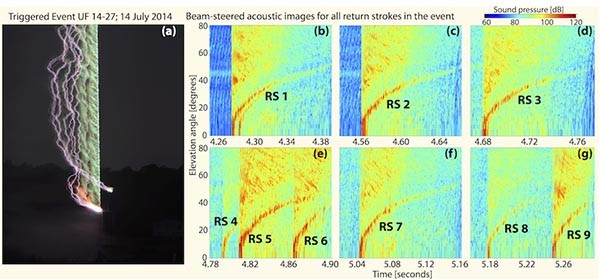For the first time ever, scientists have captured thunder via a unique visualization of its sound waves.
A team led by Maher Dayeh from the Southwest Research Institute in Texas revealed how lightning strikes the planet at a whopping 4 million times every single day where scientists are still trying to figure out the physics behind this natural phenomenon.
According to Dayeh, scientists understand the general mechanics of thunder generation but it is still not clear what are the physical processess from the lightning discharge that makes that distinct thunder rumble. An observer can experience thunder based upon the lightning distance; if it is nearby, it possesses a sharp crack but when it is more distant, it emits a deep and longer rumbling sound.
Most "see" thunder with a flashing bolt from lightning that accompanies it but apart from that, there are more complex processes that involve these electrostatic charges that are produced from storm cloud formations.
Since lightning and thunder are both unpredictable events, Dayeh says that these phenomena can be analyzed and observed from the aid of artificially triggered events.
In this new study, Dayeh and team conducted experiments by launching a small rocket that is attached to a grounded copper wire up into some thunderclouds. This wire serves as a conductive channel that can create a lightning path that can now be predictable.
This method can help scientists to focus more on instruments and conduct experiments in repetition near this electric discharge channel.
These experiments were then carried out at the International Center for Lightning Research and Testing at the University of Florida in Gainesville. Scientists believe that this U.S. state receives the most lightning strikes every year.
From the launch pad of the small rocket, Dayeh and team designed a complex arrangement of 15 microphones that are placed one meter apart from each there at a distance of 95 meters from the pad where lightning is expected to strike.
This new study has significant findings that can help scientists to better understand thunderstorms and improve on weather forecasting.



























